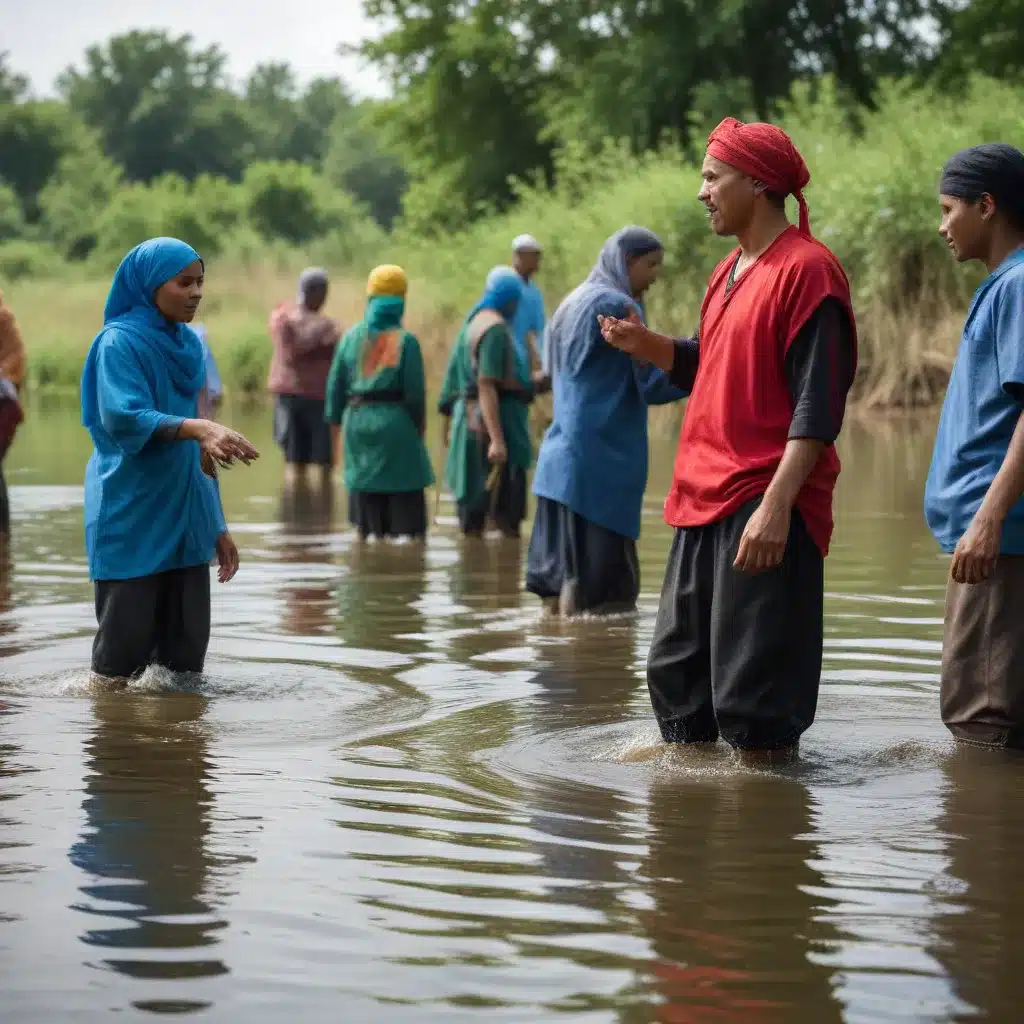
The Influence of Cultural Dynamics on Water Disputes
Water has been a source of life, contention, and cooperation throughout human history. As populations grow and climate change disrupts water cycles, disputes over this precious resource are becoming increasingly common. Effective conflict resolution in water-stressed regions requires a deep understanding of the cultural factors shaping perceptions, behaviors, and dynamics.
By examining the intersection of culture and water-based conflicts, we can unlock new pathways for sustainable, community-driven solutions. This article explores how the diverse lenses of cultural identity, communication styles, and meaning-making influence the conflicts and collaborations that arise around water access, allocation, and management.
Unpacking the Cultural Layers of Water Conflicts
Water disputes rarely exist in isolation – they are inextricably linked to the cultural contexts in which they arise. Recognizing the multilayered nature of culture is crucial for navigating these complex, often intractable challenges.
Communication Styles: High-Context vs. Low-Context
One fundamental cultural dimension that shapes water conflicts is communication style. Societies tend to fall along a spectrum of high-context and low-context communication.
In high-context cultures, much of the meaning is conveyed implicitly through nonverbal cues, shared understandings, and reliance on context. Water negotiations in these settings may emphasize relationship-building, indirect speech, and unspoken expectations. Conversely, low-context cultures favor direct, explicit communication, with water disputes often centering on the precise language of policies, regulations, and legal agreements.
These contrasting communication preferences can lead to misunderstandings and escalating tensions if not properly addressed. Conflict resolvers must develop cultural fluency to bridge gaps, facilitate mutual comprehension, and find common ground.
Framing Conflicts and Taming Disputes
Cultures also differ in how they conceptualize and respond to conflicts. What constitutes a “water conflict” may vary greatly across contexts. In some communities, a raised voice or emotional exchange over water access may be seen as a normal part of daily life, while others view such interactions as threatening conflicts requiring intervention.
Similarly, approaches to “taming” water disputes diverge significantly. Some societies may prefer face-to-face dialogue facilitated by respected community elders, while others turn to formal, third-party mediation processes. Understanding these cultural norms around conflict framing and resolution is crucial for designing appropriate, context-specific interventions.
Meaning-Making and Identity
At the deepest level, cultures shape the very meaning we ascribe to water and how it is woven into our individual and collective identities. Some communities view water as a sacred, life-giving force, while others see it primarily as an economic resource to be managed and exploited.
These differing worldviews profoundly influence how water-related disputes are framed, the values and priorities that are at stake, and the strategies considered acceptable for addressing them. Conflict resolvers must delve into the symbolic, identity-based dimensions of water conflicts to uncover their root causes and navigate the complex terrain of meaning-making.
Bridging Cultural Divides through Collaborative Processes
Recognizing the cultural factors shaping water conflicts is the first step, but putting this knowledge into practice requires innovative, collaborative approaches. Successful strategies for bridging cultural divides and fostering sustainable solutions often involve the following elements:
Cultivating Cultural Fluency
Conflict resolvers must develop deep, nuanced understandings of the cultural contexts in which water disputes unfold. This goes beyond superficial knowledge of customs and traditions – it requires immersing oneself in the diverse ways of knowing, communicating, and making meaning that exist within a community.
By cultivating cultural fluency, practitioners can navigate the complex, often hidden dimensions of water conflicts, build trust, and facilitate meaningful dialogue across differences.
Co-Constructing Shared Narratives
One powerful tool for bridging cultural divides is the collaborative construction of shared narratives around water conflicts and their resolution. By inviting diverse stakeholders to contribute their stories, perspectives, and metaphors, conflict resolvers can create space for mutual understanding and the emergence of common ground.
This narrative approach allows participants to move beyond rigid positions and explore the deeper, identity-based elements of water-related disputes. As shared stories unfold, new pathways for collaborative problem-solving can crystallize.
Embracing Flexible, Adaptive Processes
Effective water conflict resolution must be attuned to the dynamic, ever-changing nature of culture. Rigid, one-size-fits-all approaches are unlikely to succeed in the face of such complexity. Instead, conflict resolvers should embrace flexible, adaptive processes that can evolve alongside the cultural contexts in which they operate.
This may involve iterative cycles of learning, experimentation, and refinement – always remaining open to the unique needs and perspectives of local communities. By cultivating agility and responsiveness, practitioners can navigate the nuanced, fluid reality of water-based conflicts.
Leveraging Community-Driven Solutions
Ultimately, the most durable solutions to water disputes will emerge from the communities themselves, drawing upon their own cultural resources and lived experiences. Conflict resolvers should see their role not as imposing external fixes, but as facilitating the empowerment of local stakeholders to develop context-appropriate strategies.
This may involve supporting community-led water governance structures, amplifying marginalized voices, and building the capacity of diverse actors to collaborate across cultural boundaries. By centering local ownership and agency, water conflict resolution can become a truly transformative process.
Currents of Change: A Hopeful Future
As the world faces growing water scarcity and intensifying disputes, the need for culturally-attuned conflict resolution has never been more urgent. By embracing the nuances of culture and its profound influence on perceptions, behaviors, and identities, we can unlock new pathways for sustainable, community-driven solutions.
The currents of change are swirling, carrying both challenges and opportunities. By cultivating cultural fluency, co-constructing shared narratives, and empowering local stakeholders, we can navigate these complex waters and chart a course towards a more equitable, resilient future. Water-based conflicts need not be intractable – with creativity, flexibility, and a deep respect for cultural diversity, we can transform them into catalysts for lasting, positive change.

